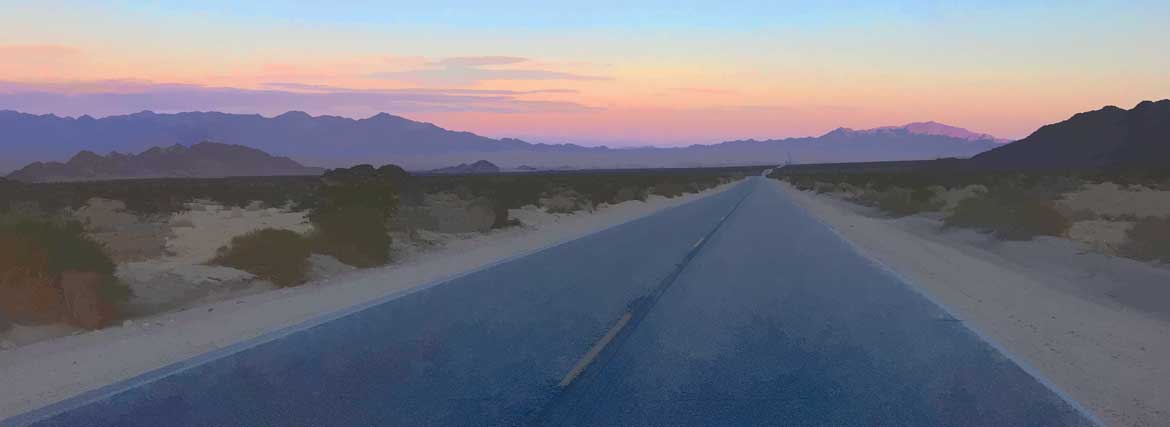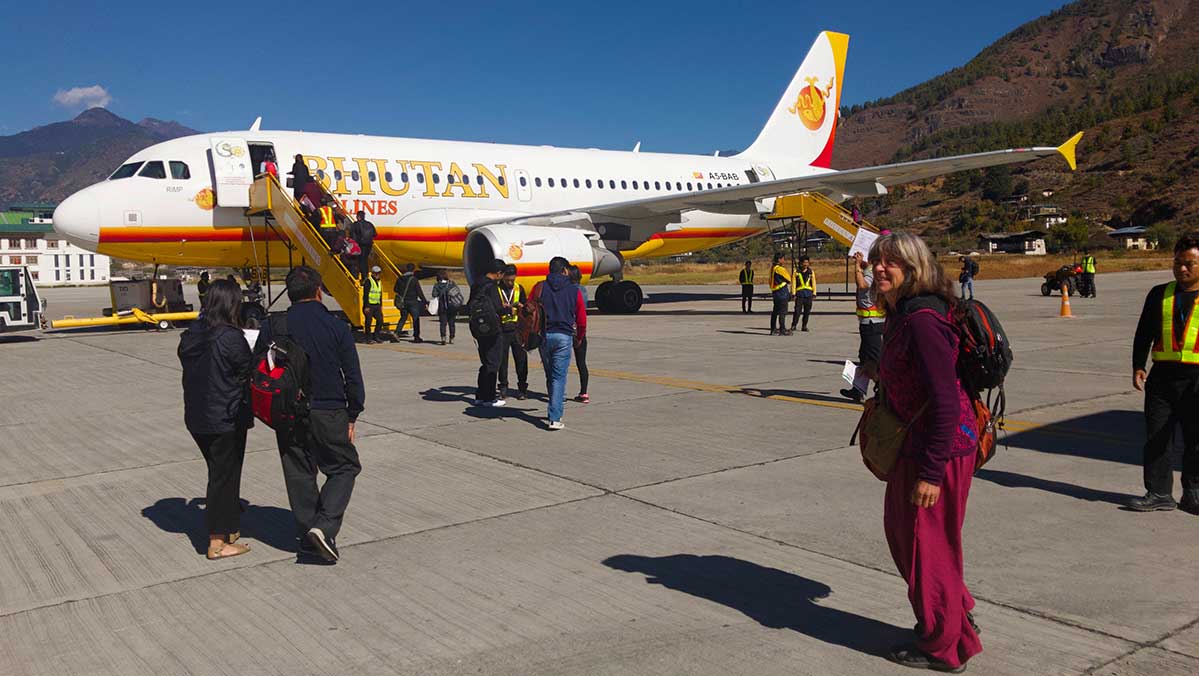
Sky Mind Retreats Carbon Credits Mission and Process
SMR Climate Mission
- To recognize and begin to address the environmental harm caused by the carbon emissions from the travel of participants and teachers;
- To support and encourage other meditation retreat institutions to recognize and begin to address the environmental impact of their participants’ travel;
- To educate retreat participants about their own carbon footprint, and support them in encouraging broader system changes needed to directly address emissions from transportation.
SMR Sustainabiltiy Strategies
SMR has a broad sustainability strategy to address our environmental footprint, including:
- Office space in a straw bale building which offsets its electricity use (including heating, cooling, and water heating) with onsite photovoltaics;
- Susie's primary vehicle is a Prius, the most efficient available suitable for her long distance travel between remote retreat sites without electric vehicle charging;
- Retreat cooks source as much food from local and organic sources as possible, and minimize food waste;
- Susie is a guiding teacher of One Earth Sangha, whose mission is to bring the essential wisdom and practices from the Buddhist tradition to collective engagement on critical ecological crises;
- For impacts which we cannot address directly, such as some transportation emissions, to calculate those impacts and purchase 200% carbon credits.
SMR Climate Impacts 2017-18
SMR purchased 420 tonnes of Carbon Credits, 200% of calculated CO2e generation. Carbon Credits were purchased from a variety of high-quality vendors that fund projects globally and locally.
Why Carbon Credits?
The best climate science says that we need to fully decarbonize the global economy by 2050 to avoid the worst impacts of climate change. Very soon we have to address all emissions directly, not pay someone to reduce emissions in another place to allow us to continue to pollute directly. For that reason, it is critical that using carbon credits is done as a part of an overall strategy where we do everything we can to directly reduce emissions and only purchase credits to address those emissions that are particularly difficult to tackle directly today.
Transportation to and from our retreats is particularly hard to address directly today. There are steps that we can take, including carpooling and using electric vehicles powered by renewable energy. Where electric transportation is not possible and where flying is needed to reach our retreats, emissions remain which we plan to address through well-considered carbon credit purchases. Recognizing the remaining uncertainties of carbon credit programs and the need to rapidly reduce global carbon emissions, we have decided to purchase twice the number of carbon credits as our calculations suggest are necessary to address the transportation emissions from our retreats. We also plan to regularly review options to more directly reduce these emissions.

How Carbon Credits Work
The following description is quoted from The Sierra Club who has partnered with NativeEnergy, a popular carbon offset retailer:
There are two sides to the carbon offset equation: On one side, you calculate how much carbon a certain activity emits. Let's use as an example a flight from San Francisco to Paris. Your personal share of carbon emissions for that flight equals approximately 4.5 tons.
On the other side of the equation, the folks at NativeEnergy have identified a potential wind energy project that needs additional funding to be built. They calculate how much wind energy this project will generate over its lifetime and assign a dollar figure to each kilowatt-hour based on the cost of generating it. NativeEnergy reasons that every kilowatt-hour of clean energy generated by its project replaces a kilowatt-hour that would have otherwise been generated by a ‘dirty’ energy source, e.g., a coal-fired power plant.
The idea of ‘offsetting’ is that your monetary contribution is responsible for a share of the wind project that equals the amount of carbon you've emitted by your activity. In the case of our flight to Paris, you would pay $70 to NativeEnergy to help fund the building of a wind farm.
Investing in Carbon Offset projects builds demand for Renewable Energy and other carbon emission reduction projects, so that the ultimate goal of a world without human carbon pollution can be achieved.
Carbon Credits Limits
The Carbon Credit market provides a way for individuals and organizations to invest in projects that reduce carbon emissions on the planet. Sometimes these credits are referred to as “offsets” because people or companies purchase credits equal to an amount of their carbon emissions footprint that they aren’t able to reduce directly.
The term ‘offset’ is sometimes controversial because it implies that by purchasing carbon credits we are fully addressing the carbon pollution we emit. In truth, carbon credits are at most a ‘last resort’ solution and a temporary way to address emissions that are hard or impossible for us to resolve directly at this time. To truly decarbonize our transport system will require policy changes in our larger transportation systems.
Purchasing Carbon Credits does NOT:
Criteria used to determine high quality Carbon Credit projects
- Real: Not too long ago, the market was filled with fake carbon offset projects and “developers” were just stealing good-intentioned people’s money. So now standards for a verified project include “Real” as a criteria.
- Unique: When the carbon trading market first began growing rapidly, it was difficult to keep track of projects. It happened that two people could pay for the same carbon offset, meaning that only one of them was actually offsetting their carbon footprint and the other was not actively supporting a carbon reduction project.So now there are ways to verify the uniqueness of each carbon emissions reduction unit on the market.
- Permanent: The carbon offset projects need to show that the decrease in carbon emissions will be permanent. It has happened that trees planted for a Carbon Offset project were then cut down to be sold as fuel or paper once the trees matured. The verification process now continues to track permanence.
- Measurable: Third-party auditors have to be able to calculate and measure the expected and actual carbon emission reduction resulting from the Carbon Offset project.
- Verifiable: It can be difficult to access project sites, since many of them are in developing nations. Navigating the bureaucratic red tape of these nations, including in the USA, is also a challenging process. It requires a tremendous amount of NGO and governmental cooperation to complete and continue to verify each project.
- Additionality: This criterion may be the most important and the most difficult to verify. “Beyond business-as-usual” is the basis for this one. Additionality is verified when it can be shown that the project would not have occurred if the carbon offset funds were not available. So, the project cannot be dictated by national laws nor can the project be a part of an already existing plan for infrastructural changes.
- Leakage: This criteria is particularly important for projects related to conservation of forests or other natural areas. Often the major drivers of deforestation or habitat are agriculture production (especially soy, beef, and palm oil). Even where a project protects a certain area of forest, for example, from deforestation, agriculture production can just move to another forest and emissions aren’t actually reduced. This makes forest projects particularly challenging for generating reliable carbon credits.
Types of High-Quality Carbon Credit Projects
- Renewable Energy: This is the top recommendation as it can have an immediate impact in reducing carbon emissions and create lasting infrastructural change in energy generation. Solar and wind projects are preferred, as some biomass projects can be controversial depending on their source of biomass and how the carbon impact is calculated. .
- Energy Efficiency: These projects also have an immediate impact in reduction of carbon emissions. They are considered the “low hanging fruit” of the Carbon Offset market since the changes are relatively simple . Typically, the projects involve changing the historical use of fossil fuel stoves of people in developing nations to more efficient, less polluting stoves. Pitfall to this option: why should we (extremely high carbon emitters) ask people halfway across the world (low carbon emitters) to change their behaviors?
- Methane Reduction/Destruction: Methane has an extremely potent global warming potential, 20-100 times more potent than CO2. By avoiding the release of methane from landfills or other sources, projects can reduce the impact from this ‘super greenhouse gas’. Projects typically capture methane which would have escaped into the atmosphere and utilize it as a replacement for natural gas. Burning methane results in the production of CO2, which dramatically decreases its potency.
Recommended High Quality Carbon Credit Retailers
The Gold Standard
Price per tonne CO2e: currently $10-18 depending on specific project
Projects exclusively in developing nations
The most highly regarded verifier and retailer of carbon offset projects. Endorsed by many social and environmental justice organizations. Most stringent verification process along with multitudes of co-benefits for each project
80% of carbon offset revenue goes directly to projects
NativeEnergy
Price per tonne CO2e: $15.50
Projects around the globe
Verified by Gold Standard and Climate Action Reserve
Top retailer for environmentally-conscious corporations
Purchase offsets to “bridge financial gap” for projects that have yet to be completed. Most offset revenue from other retailers goes to completed projects to pay back the capital that investors laid out to get a project completed. NativeEnergy’s unique niche in the market is community-derived projects that lack big-time investors and so they are trying to “crowd-source” these projects by selling offsets.
Terrapass
Price per tonne CO2e: $11
Projects exclusively in USA
Verified by Gold Standard, Green-e and Climate Action Reserve
Purchase is not project-specific.
Bonneville Environmental Foundation
Price per tonne CO2e: $10
Projects exclusively in USA and Canada
Verified by Green-e and Climate Action Reserve
Purchase offset from Foundation, who then determines which projects to fund
More details about SMR's methodology in calculating emissions in this PDF.
Much thanks to Shannon Anderson, Lou Leonard and Kalen Jones for their work on this project.
